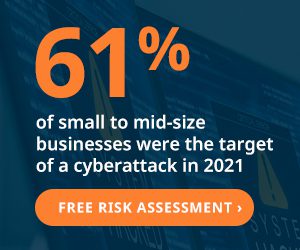The new fiscal year just started, and many Human Services Agencies have planned for implementing an Electronic Health Record (EHR) this year. Agencies have been moving in this direction for a while now, but the need to adopt an EHR has been accelerated by a variety of government and other payer initiatives. As agencies move to implement and adopt them, selecting the right EHR becomes a critical decision in adhering to the demands of the industry and reaping the additional benefits an EHR can offer.
For example, when you select the right EHR for your agency, the benefits can include streamlined operations, improved client care, and ensured compliance with regulations. If your agency is planning to select and implement an EHR in the next 6 to 12 months, we have some key strategies for ensuring you select the right EHR for your agency.
Key Strategies to Select the Right EHR
Selecting an EHR requires examining your vendor options against your agency’s specific needs. There are myriad factors to consider, and the whole undertaking can feel overwhelming. But if you follow these key, big-picture strategies, you can both make the process less cumbersome and feel more assured that you’re selecting the right EHR for your organization.
Form the Right Team to Select the Right EHR
The foundation of a successful EHR selection process is assembling the right team. To build this team, start by identifying all relevant stakeholders. Your team should comprise a diverse group, with representatives from all departments. Include frontline staff from all services and programs and from back-office functions. And don’t leave out finance and IT! Both of those functions are integral to the overall success of your new EHR.
Experience Growth in Your Company Through EHR Optimization
Perhaps most importantly, ensure active participation and support from top leadership. The success of your EHR initiative is highly dependent upon establishing buy-in across your agency. Getting everyone on board is virtually impossible without leadership supporting and driving the change throughout your organization.
Finally, once you’ve assembled the right EHR selection team, implement structured meeting and decision-making processes. This keeps everyone on the same page and effectively manages expectations for the group.
Remember, the team you form will be instrumental in driving the selection process and eventual implementation. Their diverse perspectives will help ensure that the chosen EHR meets the needs of all users and clients.
Conduct a Comprehensive Needs Assessment
You need to find an EHR that meets your agency’s unique needs, which means you must have a crystal-clear understanding of what those needs are. For starters, narrow your focus only to those EHR options that were designed specifically for the Human Services sector.
Next, identify current workflows and pain points that need addressing. The EHR you select must be able to accommodate your workflows and the forms which will be needed to capture information from those processes.
Select the Right EHR for All Departments
Also, define specific departmental requirements, and consider your needs for both standardization and customization. If your is large, delivers a variety of programs and services, or includes multiple locations, you’ll likely want an EHR with robust standardization capabilities. At the same time, consider specific requirements for individual departments, assess how easily the system can be tailored to those needs. While you’re at it, ensure you understand the costs and process for customization.
Don’t Forget Regulatory Compliance Needs
Similarly, pinpoint and outline all your regulatory compliance needs – both those you need immediately and those that are on the horizon for your programs. Select the right EHR for collecting and reporting this data. That is, clearly define both the reporting capabilities required and the reporting capabilities you desire to improve your performance.
Finally, gather staff feedback and prioritize factors that will enhance their ease-of-use. Getting their input will help earn their buy-in for the shift to the EHR, as well as help them learn and use the system effectively once it’s adopted.
Investing the time into a thorough needs assessment will help you create a clear picture of what your ideal EHR should offer, making the selection process more focused and efficient.
Evaluate Interoperability and Integration Capabilities
Over the last 60 years, healthcare information has evolved from isolated, written records within an individual provider’s practice to information which can be captured and exchanged digitally. The development and adoption of Electronic Health Records make it possible for different healthcare organizations to exchange information and to more seamlessly deliver effective interdisciplinary care. That data exchange requires Modern Certified EHR Technology (CEHRT) which includes discrete machine-readable data that can be shared with other EHRs, even when the exchanges are among different EHR software platforms.
What Is Interoperability?
In short, this is referred to as “interoperability,” which is defined by IBM as, “… timely and secure access, integration and use of electronic health data so that it can be used to optimize health outcomes for individuals and populations.”
That is, your EHR can’t exist in a vacuum and to select the right EHR for your agency, you must consider only Certified EHR Systems. For example, Netsmart and Qualifacts are two of largest EHR systems for the Human Services sector that are certified as interoperable.
Internal Interoperability and Integrations
In addition to interoperability requirements, you must also determine how well the EHR you select will work with your existing data and workflows. You need your EHR to exchange information with other EHRs and to share data across your organization. Selecting the right EHR for your agency includes its ability to integrate with other platforms you use for your service delivery and business needs. For one, integration strengthens data security by streamlining standards and processes for protecting client’s privacy and complying with regulations such as HIPAA.
Finally, ensuring the EHR will integrate with systems in departments like billing, HR, and finance will help to reduce the administrative burdens associated with pulling information from different systems. For a variety of reasons, it’s beneficial to be able to access all relevant records from a single platform. At the end of the day, seamless integration can significantly improve efficiency and data accuracy across your agency.
Thoroughly Appraise EHR Vendors
Keep in mind that you’re not just making a one-time purchase of software. Your decision means entering a long-term partnership with the vendor, consider what that relationship might look like over time. To select the right EHR for your organization, you must fully trust the vendor’s product and reputation. Therefore, you don’t just take the vendor’s word for it. Reach out to others for details on their experiences using each vendor. Talk to peer agencies to get their feedback, or even do a site visit to see the EHR in action, if possible.
Other ways to vet EHR vendors via third parties include reading case studies and looking up online reviews, including reviews from current and past employees on sites like Indeed.
The Right EHR Meets Your Data Migration, Standardization, and Customization Needs
As for interacting directly with the vendors, ask them for comprehensive demonstrations of their platforms and get a clear picture of their data migration capabilities. Furthermore, ask them how their standardization and customization capabilities measure up to the requirements you identified in your needs assessment. Be sure to also think about your future needs and inquire about the scalability of the platforms.
Finally, assess the vendors’ strengths and weaknesses around their training and support offerings. Leverage what you discover to determine whether you need to consider third-party consultants for implementation, training, and ongoing support to make implementation go more smoothly.
Evaluate All Costs of the Investment
In addition to selecting the right EHR for your specific service delivery needs, you are selecting the right EHR for your budget. As you consider the ongoing relationship, you’ll be establishing with the EHR vendor, consider the long-term costs in addition to the immediate investment required for implementation. Yes, you must look at the cost of the software itself, but there are additional elements you’ll need to factor into your budget.
Direct Costs
Set-up costs, implementation expenses, and ongoing maintenance and support fees are among the “built-in” investments that will come with working with any given EHR vendor. However, there are additional costs to consider beyond what you’ll be paying the software vendor. For example, you may need to make significant investments in IT to implement your EHR. This expense may require you to hire additional IT personnel or consultants on top of investing in new technology needed to adopt the EHR.
Additional Resources and Indirect Costs
Lastly, consider additional resources that may be required to implement and adopt the EHR, as well as indirect costs like lost revenue during training and rollout. If staff spend fewer hours delivering services as they participate in the EHR selection, implementation, and adoption activities, consider the magnitude of the impact on your bottom line.
If you believe hiring third-party consultants to assist your agency with the Organizational Change Management (OCM) and project management needed to implement effectively, don’t forget to include that expense in your assessment. However, weigh that in conjunction with the time staff might need to devote to your EHR initiative, as expert consultants can help ensure they’re involved and properly trained while also minimizing time away from service delivery.
A thorough cost analysis will help prevent surprises down the road and ensure you’re making a sustainable investment.
Selecting the Right EHR Will Pay Dividends
Selecting the right EHR is a significant undertaking, but by following these strategies, your Human Services agency can make an informed decision that supports your mission and improves client care. Remember, outside sources may be driving your need to digitize your health records, but adopting an EHR will also turn you into data-driven superstars who deliver exceptional care, improve health outcomes, enhance employee satisfaction and engagement, and attract and retain qualified staff.
Keep your eye on the prize: The goal isn’t only to digitize your records, but to transform your operations for the better. Take the time to do it right, and your agency will reap the benefits for years to come.


